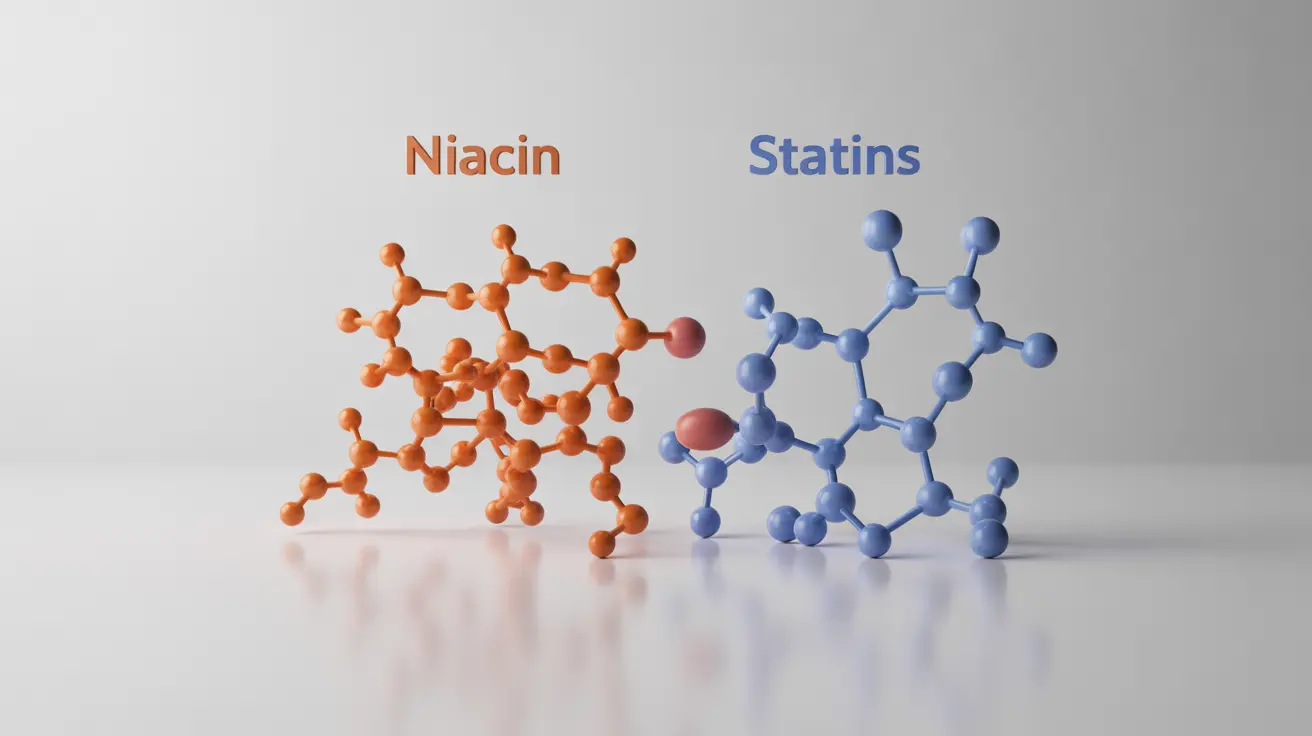When it comes to managing cholesterol levels, healthcare providers often recommend either statins or niacin as treatment options. Both medications work to improve cholesterol profiles, but they operate through different mechanisms and offer distinct benefits and considerations. Understanding these differences is crucial for making informed decisions about cholesterol management.
This comprehensive guide examines how niacin and statins compare in their effectiveness, safety profiles, and appropriate uses for cholesterol control. We'll explore the unique characteristics of each medication to help you better understand their roles in cardiovascular health.
Understanding Niacin and Statins
Niacin (Vitamin B3) is a naturally occurring nutrient that, in therapeutic doses, can significantly impact cholesterol levels. Statins, on the other hand, are prescription medications specifically designed to lower cholesterol by inhibiting an enzyme responsible for cholesterol production in the liver.
How Niacin Works
Niacin affects cholesterol levels through multiple mechanisms:
- Reduces the production of VLDL (very low-density lipoprotein)
- Decreases triglyceride levels
- Increases HDL (good) cholesterol
- Modestly reduces LDL (bad) cholesterol
How Statins Work
Statins operate through a different pathway:
- Block HMG-CoA reductase enzyme
- Significantly reduce LDL cholesterol production
- Moderately increase HDL cholesterol
- Help stabilize arterial plaque
Effectiveness Comparison
When comparing the effectiveness of these medications, statins generally show superior results in reducing LDL cholesterol, while niacin demonstrates particular strength in raising HDL cholesterol levels. Statins typically reduce LDL cholesterol by 20-60%, while niacin might achieve a 10-20% reduction. However, niacin can increase HDL cholesterol by 15-35%, which is generally more than what statins can accomplish.
Side Effects and Safety Considerations
Niacin Side Effects
Common side effects of niacin include:
- Flushing and skin reactions
- Stomach upset
- Headaches
- Elevated blood sugar levels
- Potential liver concerns at high doses
Statin Side Effects
Statin-related side effects may include:
- Muscle pain and weakness
- Liver enzyme elevations
- Memory problems
- Increased blood sugar levels
- Digestive issues
Combination Therapy
In some cases, healthcare providers may recommend combining niacin and statins for enhanced cholesterol management. This approach requires careful monitoring and should only be undertaken under medical supervision to prevent potential complications and manage side effects effectively.
Choosing Between Niacin and Statins
The choice between niacin and statins often depends on several factors:
- Individual cholesterol profile
- Cardiovascular risk factors
- Tolerance to side effects
- Personal medical history
- Treatment goals
Frequently Asked Questions
What are the main differences between niacin and statins for lowering cholesterol?
The primary difference lies in their mechanisms of action and effectiveness. Statins primarily lower LDL cholesterol by blocking liver enzyme production, while niacin is particularly effective at raising HDL cholesterol and lowering triglycerides. Statins are prescription medications, while niacin is a vitamin available in supplement form.
How effective are statins compared to niacin in reducing LDL and increasing HDL cholesterol?
Statins are more effective at reducing LDL cholesterol, typically achieving 20-60% reductions compared to niacin's 10-20%. However, niacin is more effective at increasing HDL cholesterol, potentially raising levels by 15-35%, which is generally higher than statin results.
What are the common side effects and risks of taking niacin versus statins?
Niacin commonly causes flushing, skin reactions, and digestive issues, while statins are associated with muscle pain, liver concerns, and potential memory issues. Both medications can affect blood sugar levels and require monitoring of liver function.
Can niacin be safely combined with statins to improve cholesterol levels?
Yes, niacin and statins can be safely combined under medical supervision. However, this combination requires careful monitoring to prevent potential complications and manage side effects effectively.
When is niacin recommended over statins for managing high cholesterol?
Niacin might be recommended when HDL cholesterol elevation is a primary goal, when patients cannot tolerate statins, or when triglycerides are significantly elevated. It may also be considered for patients with only mildly elevated LDL cholesterol who prefer a non-prescription option.




